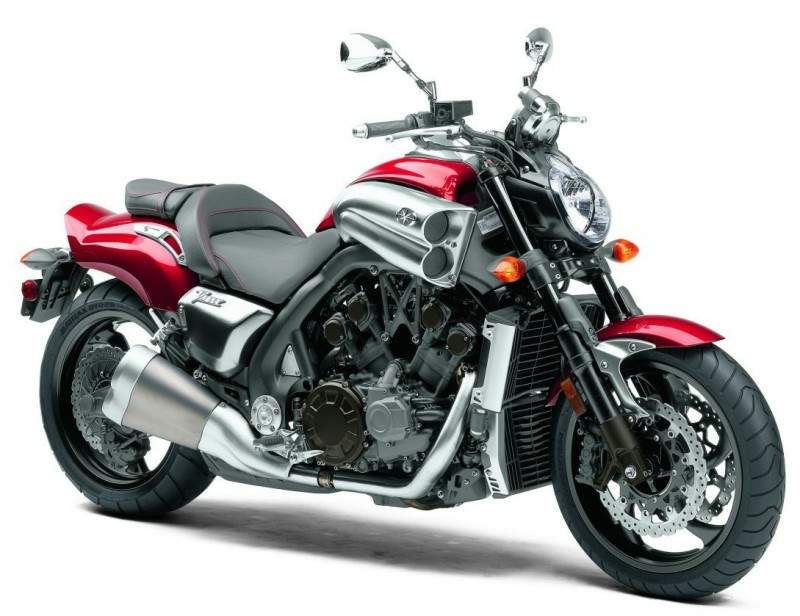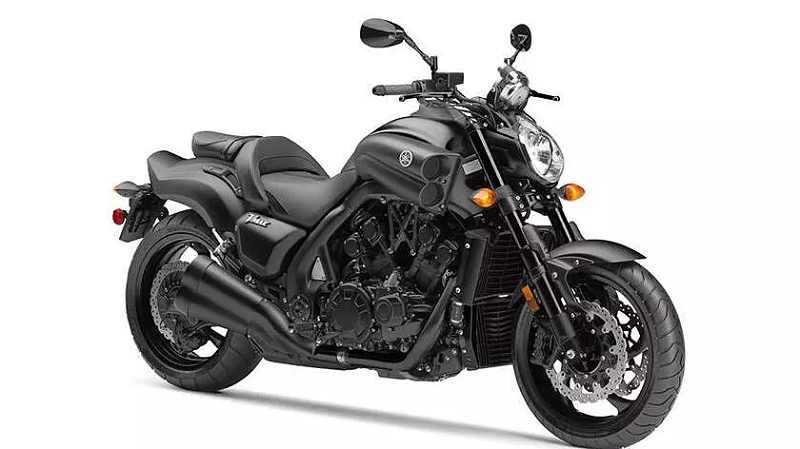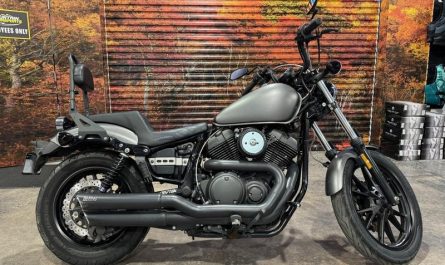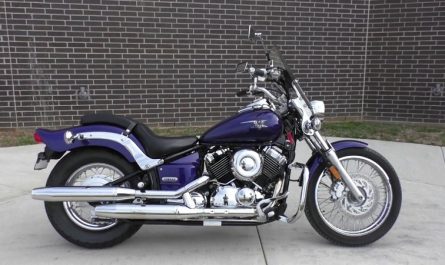The Yamaha VMAX is one of the most iconic and powerful motorcycles produced by Yamaha since its launch in 1985. The VMAX has a devoted following among motorcycle enthusiasts worldwide thanks to its groundbreaking design, incredible power, and distinctive riding experience. This manual offers a thorough examination of the Yamaha VMAX, covering its characteristics, cost, availability in various nations, design, performance, and history.
Read more: Yamaha Ténéré 700: A Comprehensive Guide
1. Introduction to Yamaha VMAX
The Yamaha VMAX, often considered a muscle bike, combines cruiser-like comfort with the performance of a sportbike. Its bold design, featuring a bulky frame, sharp lines, and muscular presence, has always made it stand out in the world of motorcycles. The VMAX is known for its powerful V4 engine and innovative V-Boost system, making it one of the most exhilarating bikes on the road.

Key Specifications:
| Specification | Details |
|---|---|
| Engine | 1,679 cc V4 |
| Power | 200 hp @ 9,000 rpm |
| Torque | 123 ft-lb @ 6,500 rpm |
| Transmission | 5-speed manual |
| Fuel Capacity | 15 liters |
| Weight | 683 lbs (310 kg) |
2. History and Evolution of Yamaha VMAX
The VMAX has an impressive past. When the motorcycle was first introduced in 1985, its sheer power won it recognition and made it an instant smash in the muscle bike segment. The VMAX saw a number of upgrades over time, most notably when Yamaha introduced the second-generation model in 2009, which kept the bike’s iconic appearance and V-Boost performance while incorporating contemporary technology.
| Model Year | Key Upgrades |
|---|---|
| 1985 | Original VMAX launch with 1,198 cc V4 engine |
| 1993 | Minor updates to the design and features |
| 2005 | 20th Anniversary Edition with cosmetic upgrades |
| 2009 | Second generation with 1,679 cc engine, more power |
| 2016 | ABS and advanced electronics integration |
3. Engine and Performance
The Yamaha VMAX’s huge 1,679 cc liquid-cooled V4 engine is its heart. With an incredible 200 horsepower and a powerful 123 lb-ft of torque, this engine guarantees an exhilarating ride. By adding more fuel and air above 6,000 rpm, the V-Boost system increases performance and gives the bike a turbo-like power surge.
Engine Details:
| Component | Specification |
|---|---|
| Engine Type | Liquid-cooled, DOHC, 65-degree V4 |
| Displacement | 1,679 cc |
| Power Output | 200 hp @ 9,000 rpm |
| Torque Output | 123 ft-lb @ 6,500 rpm |
| Transmission | 5-speed manual with slipper clutch |
4. Design and Aesthetics
The Yamaha VMAX stands out from other motorcycles because to its distinctive look. It exudes strength and presence on the road with its aggressive posture, strong frame, and striking lines. Its thick fuel tank and large, visible engine block give it a unique, raw appearance that appeals to muscle bike lovers.
Design Features:
- Muscular Tank and Chassis: The wide fuel tank and strong chassis reinforce the bike’s powerful persona.
- Dual Exhaust: The dual exhaust pipes are positioned to enhance the bike’s aggressive appeal.
- LED Lighting: Modern LED headlights and taillights for improved visibility and aesthetics.
Design Elements:
| Feature | Description |
|---|---|
| Chassis | Aluminum frame, lightweight but strong |
| Exhaust | Dual exhaust system for a throaty sound |
| Seat Height | 775 mm, suitable for most riders |
| Wheelbase | 1,700 mm, ensuring stability at speed |
5. Key Features of the Yamaha VMAX
Yamaha has integrated a variety of cutting-edge features into the VMAX, ensuring both performance and comfort.
- V-Boost System: Increases air intake above 6,000 rpm for a sudden power surge.
- Ride-by-Wire Technology: Ensures smooth throttle response.
- ABS (Anti-lock Braking System): Provides added safety during hard braking.
- Slipper Clutch: Prevents rear-wheel locking during aggressive downshifting.
- Advanced Instrumentation: A modern digital display provides real-time information on speed, fuel, and gear.
Key Features Breakdown:
| Feature | Benefit |
|---|---|
| V-Boost System | Enhances power delivery at high rpm |
| Ride-by-Wire | Smooth, precise throttle control |
| ABS | Improved braking safety |
| Slipper Clutch | Reduces engine braking effects |
| Advanced Display | Real-time information for better control |
6. Ride and Handling Experience
The Yamaha VMAX’s combination of cutting-edge technology and unadulterated power makes for an incredible ride. The bike’s low center of gravity improves its handling skills, and it remains stable at high speeds. The VMAX’s suspension system guarantees a comfortable ride on a variety of terrains, even though it is designed for straight-line performance.
Ride and Handling:
| Aspect | Description |
|---|---|
| Suspension | Fully adjustable suspension for smooth ride |
| Braking | Dual disc brakes with ABS for quick stops |
| Riding Position | Upright, comfortable for long rides |
| Handling | Stable at speed, agile at low speeds |
7. Yamaha VMAX in Popular Culture
The Yamaha VMAX’s distinctive look and powerful performance have earned it appearances in various movies and media, making it a favorite among enthusiasts.
- Movies: Featured in films such as “Ghost Rider” and “Terminator.”
- TV Shows: Appeared in action-packed scenes in motorcycle-themed series.
8. Yamaha VMAX Pricing in Different Countries
The price of the Yamaha VMAX can vary significantly depending on the country due to factors like import taxes, dealer markup, and availability.
Yamaha VMAX Price Comparison:
| Country | Price (USD Equivalent) |
|---|---|
| United States | $17,999 |
| United Kingdom | £18,000 (approx. $23,000) |
| India | ₹25,00,000 (approx. $33,000) |
| Australia | AUD 28,500 (approx. $18,500) |
| Japan | ¥2,800,000 (approx. $19,000) |
| Germany | €20,000 (approx. $22,000) |

9. Comparison with Competitors
The Yamaha VMAX competes with other muscle bikes such as the Ducati Diavel and Harley-Davidson V-Rod. While the Diavel offers more sophisticated electronics, the VMAX is known for its raw power and unique design.
| Model | Engine Capacity | Power Output | Price |
|---|---|---|---|
| Yamaha VMAX | 1,679 cc | 200 hp | $17,999 |
| Ducati Diavel | 1,262 cc | 162 hp | $20,495 |
| Harley V-Rod | 1,250 cc | 125 hp | Discontinued |
10. Maintenance and Reliability
The VMAX is known for being a reliable machine if maintained regularly. The liquid-cooled engine ensures long-term durability, and Yamaha’s widespread service network makes obtaining parts and services relatively easy.
11. Pros and Cons of Yamaha VMAX
Pros:
- Incredible power and acceleration
- Unique, aggressive design
- Reliable build quality
- Excellent stability at high speeds
Cons:
- High price point
- Heavy weight, making it harder to handle for beginners
- Fuel economy is not its strong point
12. Yamaha VMAX Special Editions
Yamaha has released several special editions of the VMAX over the years, often with cosmetic upgrades and limited production runs. Notable examples include the 20th Anniversary Edition, which featured a unique paint scheme and additional chrome accents.
13. Yamaha VMAX Accessories
The aftermarket for VMAX accessories is robust, with a variety of performance and aesthetic upgrades available, such as custom exhaust systems, seat modifications, and upgraded suspension components.
14. Yamaha VMAX Legacy and Discontinuation
Although Yamaha discontinued the VMAX in 2020 due to emission regulations and changing market demands, its legacy as one of the most powerful and unique motorcycles in history remains strong.
15. FAQs about Yamaha VMAX
1. Is the Yamaha VMAX suitable for beginners?
No, the VMAX is not recommended for beginners due to its immense power and weight.
2. What is the top speed of the Yamaha VMAX?
The Yamaha VMAX has a top speed of approximately 150 mph.
3. Why was the Yamaha VMAX discontinued?
Yamaha discontinued the VMAX in 2020 primarily due to stricter emission regulations.
4. What is the fuel efficiency of the Yamaha VMAX?
The VMAX averages around 25 mpg, which is relatively low compared to other bikes.
5. Are there any Yamaha VMAX special editions?
Yes, Yamaha has released several special editions, including the 20th Anniversary Edition.
6. Can the Yamaha VMAX be used for long-distance touring?
While it can handle long distances, its design and fuel efficiency make it less ideal for long touring compared to dedicated touring bikes.

